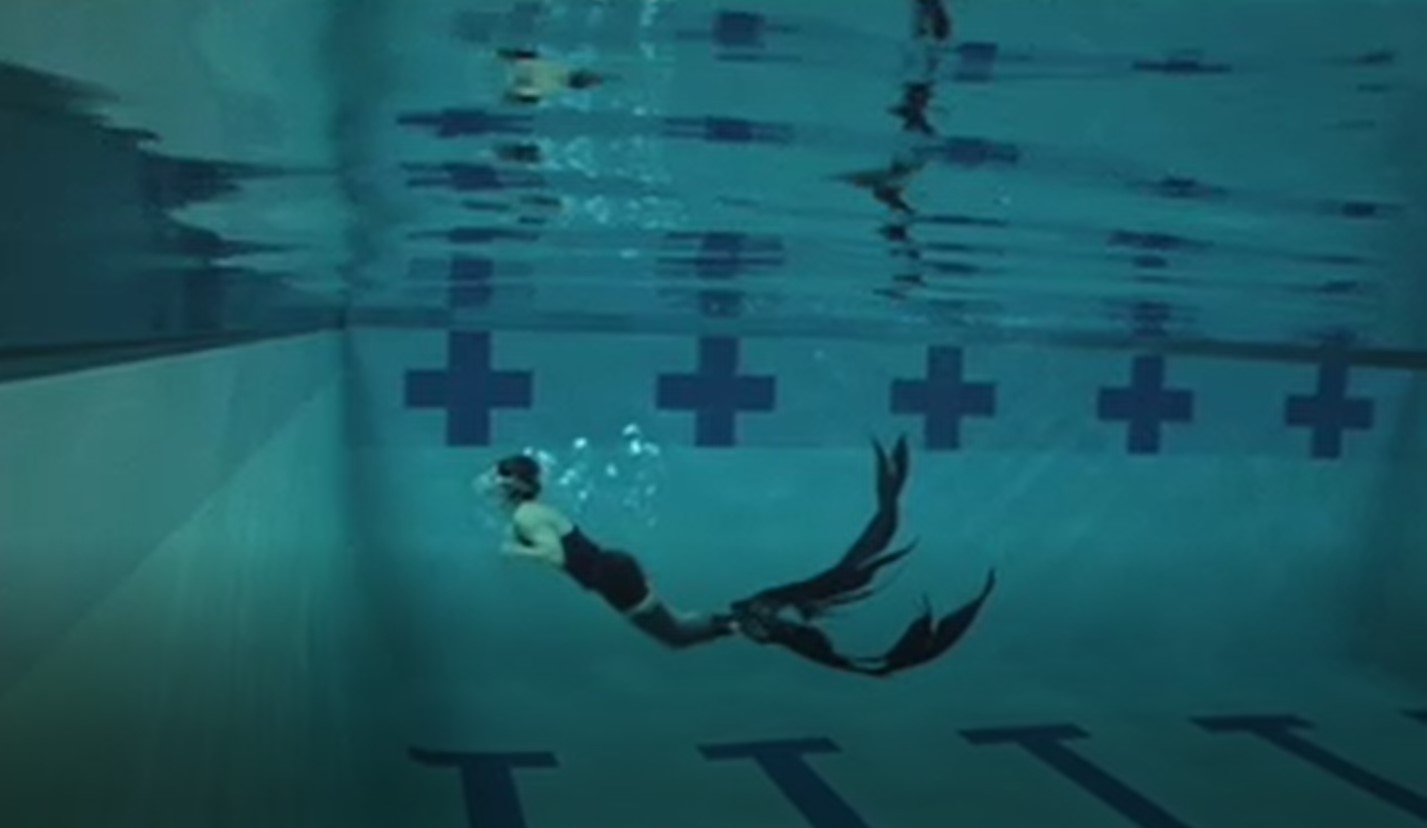

Continuing my questioning on the boundaries of a body, I began to wonder where (and why) does a boundary exist between a body and its tools. Are glasses a part of the body when they rest on the face? Are contact lenses a part of the body when they are fitted to the eye? Are pacemakers or heart stents a part of the body? What about a hammer? A tattoo? Medication? A prosthetic leg? More interesting than the answer to any of these particular questions is pinpointing what informs our reactions to them. Perhaps the distinguishing factor is how integrated the tool is to the body (conversely, how challenging it is to remove from the body), how critical the tool is for survival, or even the degree to which the tool resembles a human form.
Through custom performance prosthetics, Lisa Bufano redefined the boundaries and the faculties of her body. Stilts provided her new height and new ways to walk and dance. An articulated mono-fin accelerated her ability to swim underwater. These could be viewed as extensions to Bufano’s body: adaptive technologies that reconfigure how she moves and interacts with the environment around her. Yet Bufano subsumed her creations into the very definition of her body. On some days, her body included stilts, and on another, a tail. The idea of a modular, fluid body - or a body with interchangeable parts - may seem futuristic. Bufano summons such Sci-Fi fantasy well, evoking a dramatic image of Donna Harraway’s modern cyborg, “a hybrid of machine and organism” created when the relationship between human and technology is so intimate that the very distinction between them fades away.1
However, Harraway’s conception of a cyborg is no case of exceptionalism. You have to look no further than your clothes or your shoes to consider your own “body-plus”.2 Bufano’s prosthetics are akin to the everyday tools humans use to extend their bodies. Glasses, orthotic shoes, silverware, bikes, and stilts all facilitate a new interface between body and environment. Many of these augmentations are so commonplace that we could not imagine daily life without them. At this level, the human body is “almost never not-extended by its tools”, suggesting that the “body-plus may actually be the human’s truest state.”2
This framework invites us each to contemplate what makes up our own body-plus. Upon revisiting Bufano’s art, we may then reconsider exactly why we perceive novelty in her prosthetics and where the distinction lies between organism and machine.
1 Haraway, Donna J. “A Cyborg Manifesto.” Socialist Review, 1985.
2 Hendren, Sara. What Can a Body Do?: How We Meet the Built World. Riverhead Books, 2020.